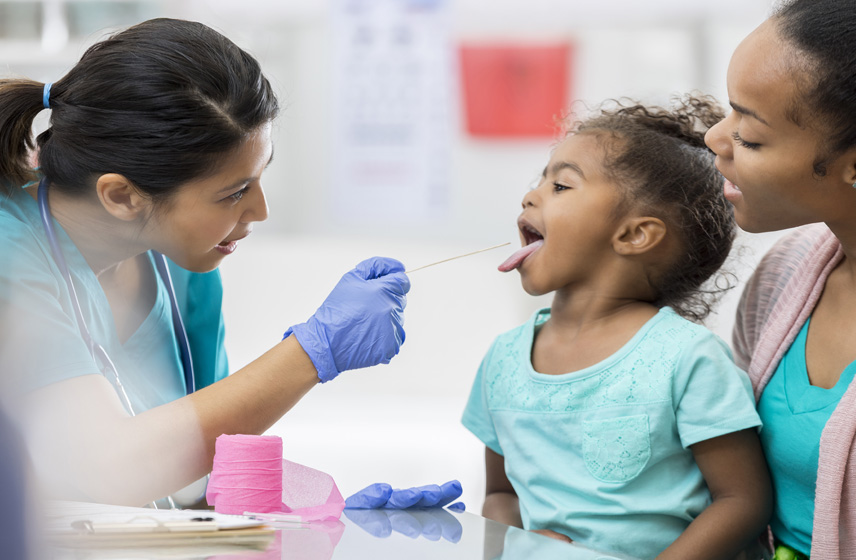Urinary tract infections (UTI) in kids can happen when bacteria or other germs get into their bladder, kidneys, ureters or urethra. Symptoms include peeing very little, painful urination, fever, fussiness, belly or back pain, and more. UTIs in kids need treatment from a healthcare provider to prevent serious complications.
Advertisement
Cleveland Clinic is a non-profit academic medical center. Advertising on our site helps support our mission. We do not endorse non-Cleveland Clinic products or services. Policy
Urinary tract infections (UTIs) in kids happen when bacteria or other germs infect your child’s urinary tract. Sometimes, people just call them “bladder infections,” but your urinary tract includes your bladder, kidneys, and the tubes that connect them to each other (ureters) and to the outside of your body (urethra).
Advertisement
Cleveland Clinic is a non-profit academic medical center. Advertising on our site helps support our mission. We do not endorse non-Cleveland Clinic products or services. Policy
You might hear a bladder infection in your child called a lower UTI or cystitis. If your child has an upper UTI, it means they have an infection in one or both kidneys (pyelonephritis).
UTIs in kids are common. But they can sometimes go unnoticed, especially if your child is too young to let you know something’s bothering them. Talk to your child’s healthcare provider right away if you notice that your child is eating or drinking less, not peeing much and is fussy or cranky.
Symptoms of a UTI in infants, babies and toddlers include:
Symptoms of a UTI in older kids include:
Symptoms of a UTI are the same in both boys and girls.
Bacteria cause most UTIs in kids. E. coli bacteria are the most common cause. They live in your digestive tract and can get into your urinary tract through your poop. This can happen if you don’t wipe properly after pooping. Sometimes, fungal infections can cause UTIs in kids, too, but they’re less common.
Advertisement
Your child might be at higher risk for a UTI if they:
Female children are more likely than males to get UTIs because their urethras (the tube that carries pee out of their bodies) are shorter and closer to their anuses (where poop leaves their bodies). This means it’s easier for bacteria to get into the urinary tract and cause an infection.
Boys are less likely to get UTIs than girls, but they can get them, too, especially if they have anatomical differences that cause pee to back up. Uncircumcised boys are at a slightly higher risk for UTIs than circumcised boys.
If left untreated, UTIs can lead to:
A healthcare provider can diagnose a UTI by asking about your child’s symptoms and getting a sample of their pee for a urinalysis or urine culture. They may also get blood tests to look for infections and test kidney function. In some cases, they’ll use imaging (like ultrasound or CT scans) to look at your child’s kidneys or bladder.
Antibiotics treat UTIs in kids. A provider will give them to your child through an IV (through a vein in their arm) or your child will take them by mouth (as a pill or liquid).
Your child will need to be on antibiotics for a week or two, in most cases. But they should start to feel better within a couple of days. Make sure they take the entire course of medication as prescribed, even if they feel better.
Contact your child’s healthcare provider if you think your child has a UTI, or if they’ve been taking antibiotics as prescribed for three days and aren’t getting better. Take your child to the emergency room if they:
Your child should start to feel better after a day or two on antibiotics. Make sure they get plenty of rest and stay hydrated by drinking enough fluids. Contact your provider if they don’t feel better after three days of treatment.
Your child may need additional tests if they have frequent UTIs or infections that keep coming back.
If your child has a UTI, they need to see a healthcare provider and get antibiotic treatment. Left untreated, UTIs can lead to kidney infections and other health issues.
Advertisement
You can reduce your child’s risk of getting a UTI by:
UTIs are fairly common in kids. And most of the time, a healthcare provider can easily treat them. If your child isn’t acting like themselves or you notice anything unusual about their bathroom habits, it’s a good idea to check with your family doctor or pediatrician. Quick treatment can prevent serious complications.
Advertisement
Need care fast? Cleveland Clinic’s Express Care and Urgent Care locations treat everything from sprains to sinus infections — no appointment needed.

Last reviewed on 05/29/2025.
Learn more about the Health Library and our editorial process.